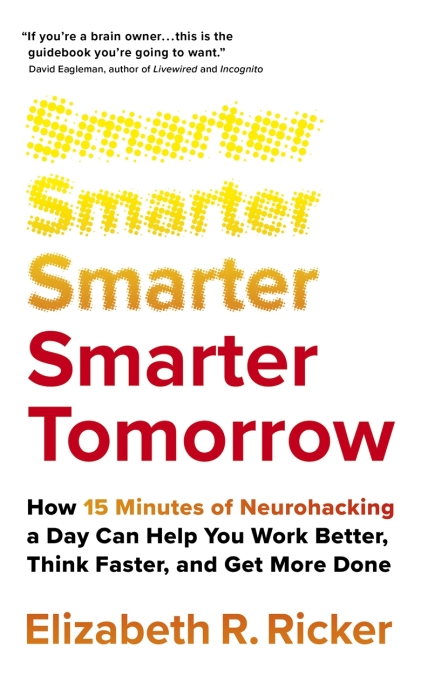Written by Lauren Geall
As Stylist’s digital writer, Lauren Geall writes on topics including mental health, wellbeing and work. She’s also a big fan of houseplants and likes to dabble in film and TV from time-to-time.
All products on this page have been selected by the editorial team, however Stylist may make commission on some products purchased through affiliate links in this article
Ever wondered whether there was a way to make your brain work… better? Welcome to the world of neurohacking.
Whether or not you’ve enjoyed the shift to working from home, it’s safe to say the reality of staring at the same four walls day in, day out has grown old pretty fast.
Unlike when you’re working in an office – where you might find yourself chatting with various colleagues, popping out to the shops on your lunch break and watching others go about their business on the commute home – working from home can quickly become monotonous, especially if you struggle to find the time to get outside and see the world during your lunch break. And this sense of boredom doesn’t just have the power to impact your mood and mental health – it can also impact your brain, too.
That’s according to Elizabeth Ricker, a Silicon Valley neuroscientist and author of the new book Smarter Tomorrow, which aims to give people the tools they need to practice ‘neurohacking’ – an approach that sees individuals attempt to improve or ‘hack’ their brain through a series of self-tests and experiments.
While Ricker acknowledges that working from home has been beneficial for the brain in some ways – it allows greater time for “deep work and flow” and gives individuals control over their environment, for example – she says she’s worried about how the lack of ‘novel’ experiences we’ve had over the last 18 months could impact our overall function (including our ability to concentrate, remember details and regulate our emotions).
“The brain is actually a pretty lazy organ,” she explains. “It’s pretty underpowered relative to everything it does, so it often tries not to pay attention or forget things in order to cut corners. And because part of what neuroplasticity (the brain’s ability to change and develop) is based on is learning new things and having novel experiences, if you don’t keep putting yourself in new and challenging environments, you can go backwards.”
Ricker’s words make the situation sound kind of bleak, but it’s not all bad news. Because while working from home may have affected our cognitive health, Ricker believes we have the tools to rectify the situation – thanks to the world of neurohacking.

The word ‘neurohacking’ may sound pretty intimidating, but it’s actually a lot simpler than it seems. In layman’s terms, neurohacking is simply a way of trying to improve the brain’s function by testing and experimenting with different ‘interventions’. And while some extreme neurohackers use interventions involving medication or other intrusive methods, Ricker’s version of neurohacking is a lot more conservative and can be practised by anyone, anywhere.
“The term neurohacking can sound a little scary, but to ‘hack’ something in this way simply means to not do something in a conventional way – to think about it creatively,” she says. “If you’re tracking your experience, defining what your problems are and trying different approaches to try and correct them, all of this falls under the category of neurohacking.”
As with all experiments, the first step in using neurohacking to identify and remedy any potential problems caused by working from home is to measure what’s going on. For example, if you’ve been finding it hard to feel creative while working from home, you might track yourself for a week or two, simply noting down the situations when you’ve struggled to be creative.
Next, Ricker explains, it’s time to come up with some interventions. “You could test which of two possible interventions improved your creativity more – going for a 10-minute stroll around the block or doing a 10-minute sun salutation yoga routine?”
To finish the neurohacking process, you’ll need to measure the impact of these interventions in comparison to your previous state – do you actually feel more creative? Are you struggling less? And then finish with a ‘washout period’ in which you stop doing those interventions and see whether you return to your previous state. If you do, you’ll know those interventions work for you – and you can implement them into your life going forward.
While this is a very simplified version of the neurohacking process, it’s demonstrative of the kind of curiosity-backed approach that Ricker outlines in her book.
“I think the goal here is to discover that you have way more power to understand and improve yourself – if you want to – than we’ve literally ever had in history before. This is partly thanks to easier data collection from apps and wearable devices, and partly from a growing evidence base on neuroplasticity,” she says. “I think the beauty of self-experimentation and hacking is that it’s totally individualised and you can make your goals highly personal.
“It allows us to examine what we want and what our strengths and weaknesses are so we can optimise ourselves on our own terms. And that to me is the most exciting thing.”
Smarter Tomorrow: How 15 Minutes Of Neurohacking A Day Can Help You Work Better, Think Faster And Get More Done is out now
Images: Getty/Hachette
Source: Read Full Article
